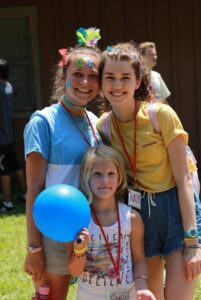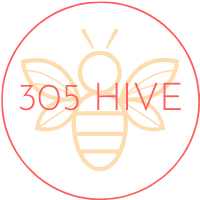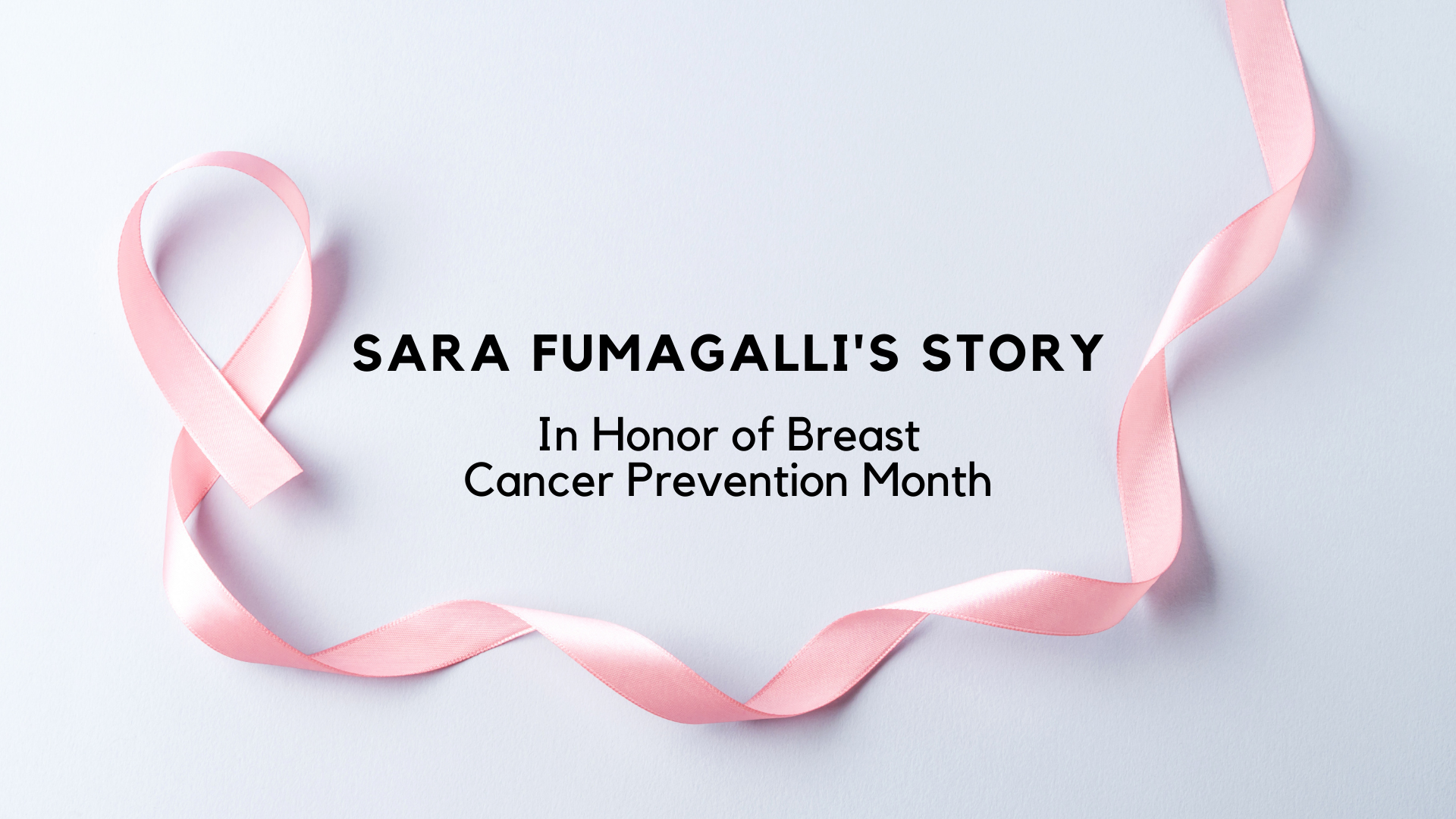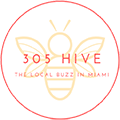In the U.S., women have a 1-in-8 chance of developing breast cancer over the course of our lifetime. Given the disease’s far-reaching impact, 305 Hive has dedicated this edition to breast cancer awareness. As a community, we are stronger together as we face life’s challenges. Today, we will hear the story of a local survivor and mother of four, Sara Fumagalli. Thank you Sara for sharing your story so that others “trust their gut” and seek help.
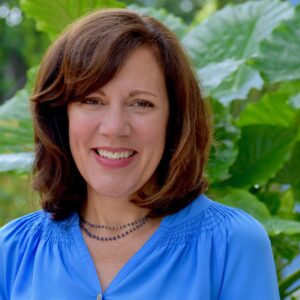
As a novice breast cancer survivor, one thing I‘ve quickly learned is that every case is unique, and oftentimes complicated. My story is full of twists and turns, and I’ve chosen to share it in an effort to help one of the 270,000 people that will be diagnosed with breast cancer this year. In early March, 2017, I noticed a small, oblong lump on the side of my left breast, almost in my armpit. I thought that the shoe had finally dropped on my blessed little life. As a mother of four happy, healthy kids, with a hard-working, supportive husband, I had yet to encounter a major life challenge. Watching some of my friends navigate through serious health problems, the loss of a parent, or worst of all, a struggle with a child’s health, I knew that at some point we all have to go through the muck. I figured it was my turn to feel the fragility of life firsthand.
Having had previous breast cancer scares, and just enough family history to keep me on my toes, I called and made an appointment with my breast radiologist. You can imagine my relief when, after both a mammogram and an ultrasound examination, the radiologist declared that my little lump was benign, as was a second growth she spotted in the interior of the same breast. Incredulous, I walked out with a report stating that both growths were “definitely benign”, but to return if there were any changes. In April, I received a letter confirming the diagnosis, and that I should return for my next annual mammogram and ultrasound in June, 2018, fourteen months later.
I returned to my normal, hectic life, and spring turned into summer. I was glad to have our eldest son home from his freshman year of college. I reluctantly sent our daughter off to her beloved summer camp to work as a counselor, and shuttled our two younger sons to basketball and guitar lessons. I loved the slower pace of summer. And every day, I checked on my little lump, and the pit in my stomach remained. By November, I determined that my lump had gotten bigger, and despite a report that said I wasn’t due back for 8 more months, called for another appointment with the radiologist. She was booked until March, so I took the first available appointment with her partner in mid-December.
The morning of my appointment, the nurse greeted me with one question. “Why are you here? You were just here in March”, she said, befuddled by my presence. I explained my first diagnosis, and the doctor’s offer to look at my little lump again if I felt it had changed. The nurse tilted her head, jotted something down in my chart (hypochondriac?), then said that the doctor would be in shortly. When the doctor came in, she told me she’d conduct an ultrasound, but first wanted to review the basics. She asked me if I performed regular self-breast exams? “Yes,”, I said, proud that I was on top of my health. “Well, let’s review the proper technique, “ she said, and explained that they should be performed lying down, so as to eliminate the likelihood of mistaking an innocuous bump for a scary lump. “I would appreciate it if you’d take another look at this,” I said, trying with all my might to keep my frustration under wraps. “I can now see it through my skin,” I said, and pulled back my hospital gown to show her for emphasis. She looked at me, then at my little lump, then at me, and said she’d meet me in the ultrasound room. With one swipe of the ultrasound wand, she confirmed that she wanted to biopsy it, then located the second suspicious growth, deciding that it needed to be biopsied too. Over the course of the nine months since my first exam, the two growths had doubled in size. The pit in my stomach grew. The following morning, she biopsied both growths and three days later, called with a firm diagnosis- I had invasive lobular carcinoma, both tumors malignant. Invasive lobular represents 10% of all breast cancer, and is known as a “sneaky” cancer. I was told how it often “hides”, evolves into multiple tumors, and can be particularly difficult to detect. Described as if it was human, I did not welcome this game of hide and seek. The bottom line- I was not a candidate for a lumpectomy or radiation. I would need a mastectomy given the size and location of the two tumors. Post-surgery, I would take medicine, called endrocrine therapy, for 5-10 years, to keep the likelihood of recurrence as low as possible.
Over the next month, my husband and I went to many appointments, and on January 25, 2018, I had a bilateral mastectomy. I am very grateful to be living in the 305, where I’ve received excellent medical care at both the Miami Cancer Institute and University of Miami’s Lennar Center. In the end, my cancer was stage 2A, due to a few pesky microscopic cells that were found in one lymph node. While I am grateful to have caught it in its early stages, I shudder to think of how much more the cancer would have developed had I waited until June, 2018 for my regularly scheduled exam.
There will be many reminders this month of Breast Cancer Awareness- perform monthly self- breast examinations, get your annual mammogram, use ultrasound technology if you have dense breasts, exercise regularly, eat your leafy greens. Here’s my two cents worth- trust your gut. No one knows your body better than you do, and you are your own best advocate.
The hardest part was telling our kids, because I knew it would scare them. It was heartbreaking to hear our youngest son’s voice quake when he heard the word cancer. Telling our eldest was difficult, during what was supposed to be a regular Sunday night call home from college, as I felt his isolation over the phone line. Our sensitive third born didn’t say a word, just gave me a big hug, and our daughter, an aspiring doctor, focused on the staging and “clear margins”.
Everyone says that kids are resilient, and that they’ll follow your lead. Sometimes, as they grow into adulthood, I think they can surpass your lead and become leaders themselves. Our daughter has taken her lifelong love of camp, her interest in pediatric medicine, and her experience with my cancer diagnosis, and gotten involved with a wonderful organization called Camp Kesem. Camp Kesem is a national organization with chapters on 116 college campuses. Each chapter fundraises throughout the school year so that in the summer, it can put on a free, one-week sleepaway camp for local children who have been impacted by a parent’s cancer.
Founded in 2000 at Stanford, the name Kesem was chosen because it’s the Hebrew word for magic. Being able to give 10,000 kids each summer a fun-filled break from the stresses of living with a parent’s cancer? Yes, that’s pure magic!
This year, on the morning of October 1st, I awoke to my daughter’s latest Instagram post, a breast cancer awareness image from @rethinkbreastcancer. And so awareness is extended to her generation, through her own advocacy and voice. This October, we both encourage you to take the time you need for your health, and to follow up with your doctors should you be uncertain of a diagnosis. If you are interested in supporting the magic of Camp Kesem, please visit my daughter’s fundraising page at https://donate.kesem.org/ranger20. To learn more about Camp Kesem and all it accomplishes year round, please visit the main website, https://www.campkesem.org.
